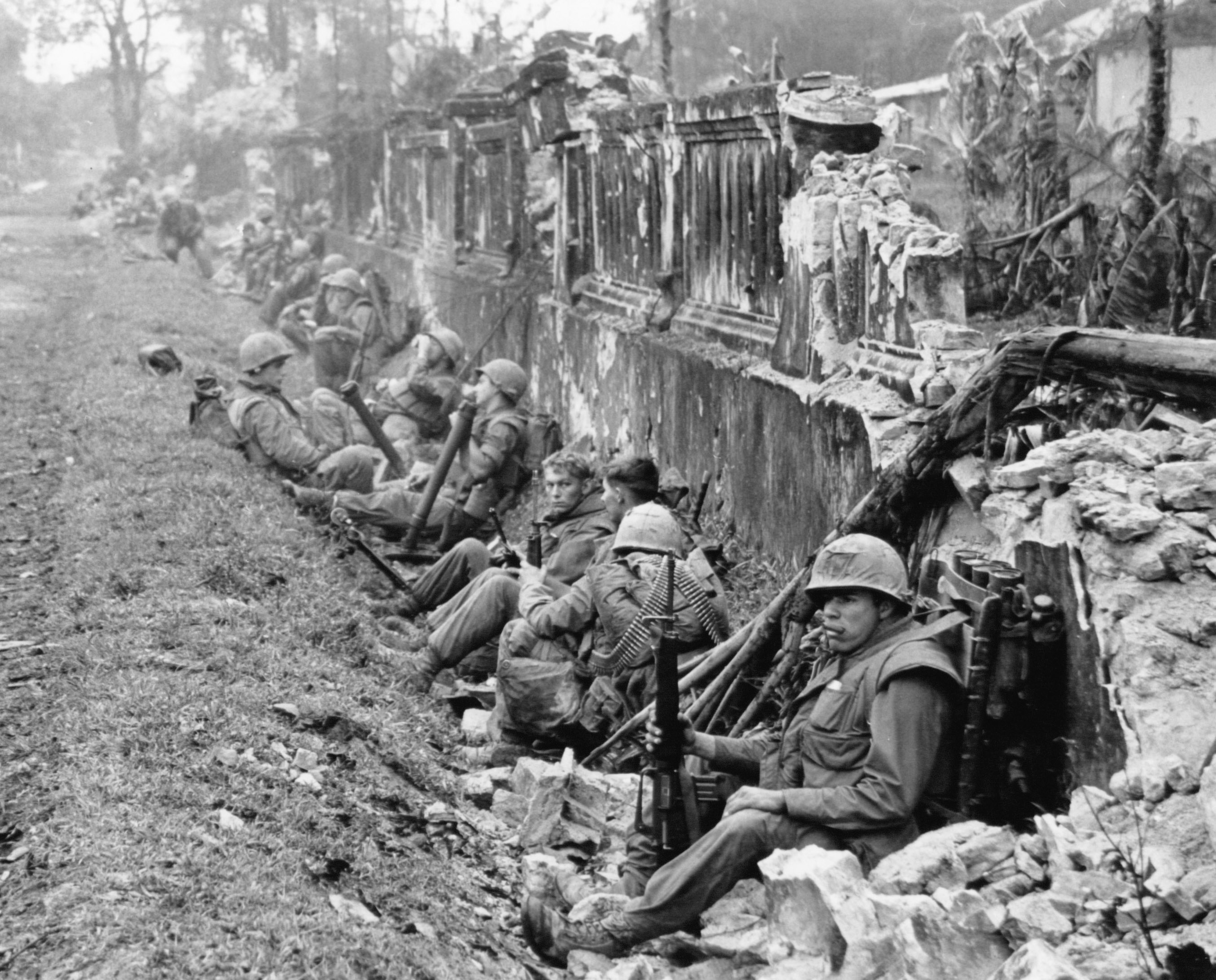The fall of Dien Bien Phu in 1954 led to peace talks in Geneva and the division of Vietnam into communist North and quasi-democratic South. Cold War tensions drew an ever-increasing commitment of U.S. troops and material support to the region. By January 1968 nearly a half-million American and 60,000 allied troops supported 340,000 South Vietnamese regulars, an equivalent number of militia and a 70,000-strong police force. Under General William Westmoreland, they fought a war of attrition against the North Vietnamese Army (70,000 in the south and Laos) and Viet Cong insurgents (60,000 regulars, as many as 200,000 guerrillas and perhaps an equal number of noncombatants). Westmoreland, as had French generals before him, prayed for setpiece battles in which his strength in troops, armor and airpower could destroy large numbers of guerrillas. In early 1968 the communists themselves answered his prayers.
A year earlier Hanoi had concluded that the corruption rife in South Vietnam’s civilian and military elite offered hope of a general revolt if it could seize control of southern population centers. So NVA forces prepared a coordinated offensive against southern targets, set for Jan. 31, 1968 (New Year’s Day in Vietnam and a period of announced truce). Perhaps due to misunderstandings, communist troops attacked five provincial capitals a day early. Local forces defeated most of those poorly coordinated attacks. Westmoreland didn’t respond with urgency even when, the following day, some 84,000 communists assaulted every major town, city and American airbase in Vietnam. The general instead focused on the siege of the American base at Khe Sanh, near the demilitarized zone separating North and South.
Despite initial communist successes —including the seizure of significant portions of Saigon and the old imperial capital of Hue—allied forces drove the communists from all urban areas by mid-April. Meanwhile, Operation Pegasus relieved the Khe Sanh defenders on April 8. Hanoi sent a new wave of assaults against 119 targets in South Vietnam on May 4 (known as Mini-Tet). Within days allied troops had stopped those units, ending the Tet Offensive.
On paper, Tet was a major allied victory. It did not spark a general uprising, South Vietnamese forces performed well, and body counts favored the allies, with as many as 100,000 communist casualties. The allies virtually destroyed the Viet Cong regular battalions.
But print and broadcast journalists brought a far different image to the American people: the (brief) communist takeover of the new U.S. Embassy in Saigon; the South Vietnamese national police chief’s summary execution of a captured Viet Cong officer (who had murdered a police officer and his family); savage street battles in Hue; and stark images of U.S. dead and wounded. Such coverage and its effect on public opinion would give Hanoi the strategic victory communist forces had not won in the streets of South Vietnam.
Lessons:
■ If the enemy has quantity and quality, do not attack.
■ Superior firepower almost always trumps ideological commitment.
■ Be wary when political masters ask you to carry the burden of attack. The Viet Cong were not wary and virtually disappeared as a political force after Tet.
■ Guerrillas rarely win set-piece battles against well-armed regulars with access to unlimited stocks of ammunition.
■ Don’t assume civilians will embrace a revolution forced on them at gunpoint.
■ Public opinion—no matter how ill-informed—can become the most effective weapon in your enemy’s arsenal.
■ Battles are won and lost by the actions of warriors on the field of battle; wars are won or lost in the minds of civilians on the street.
Originally published in the January 2011 issue of Military History. To subscribe, click here.





